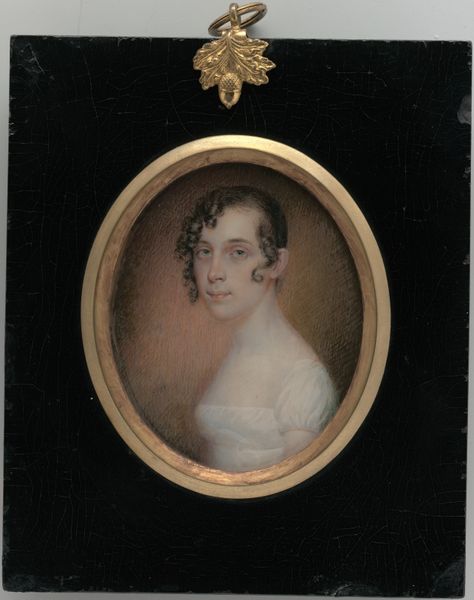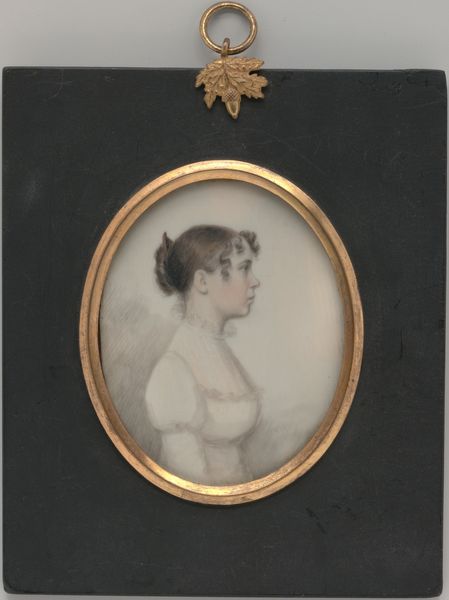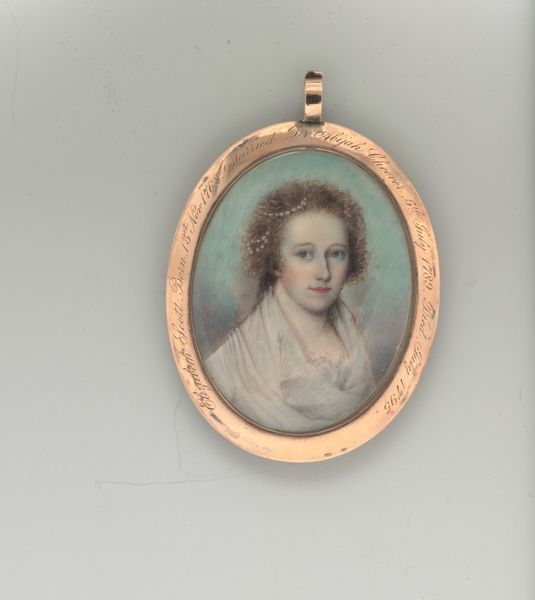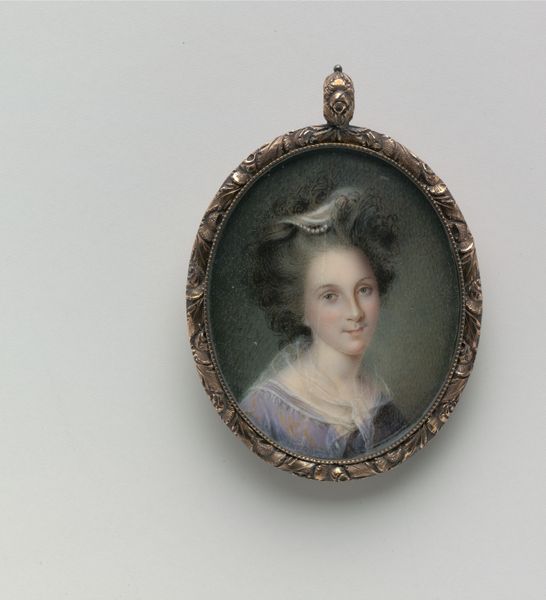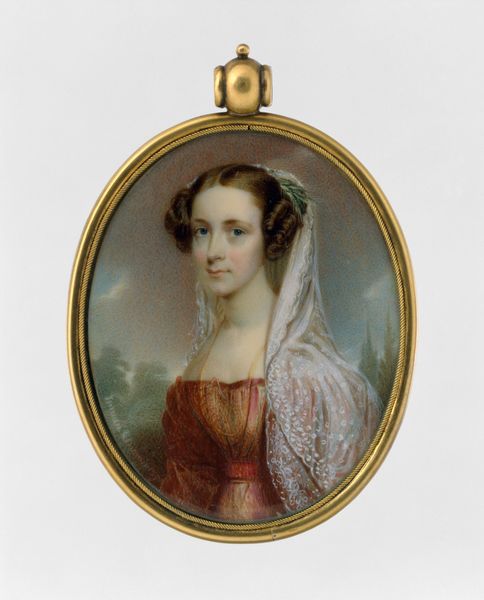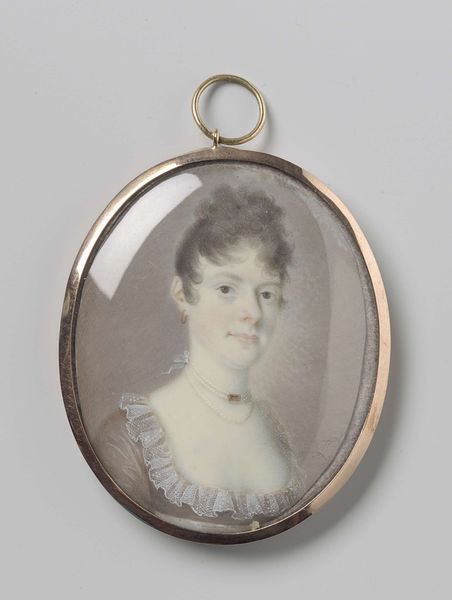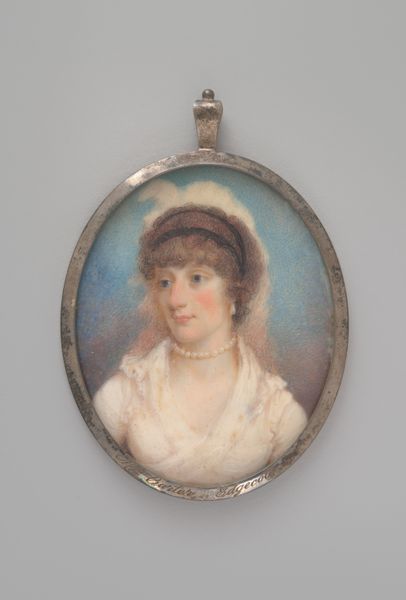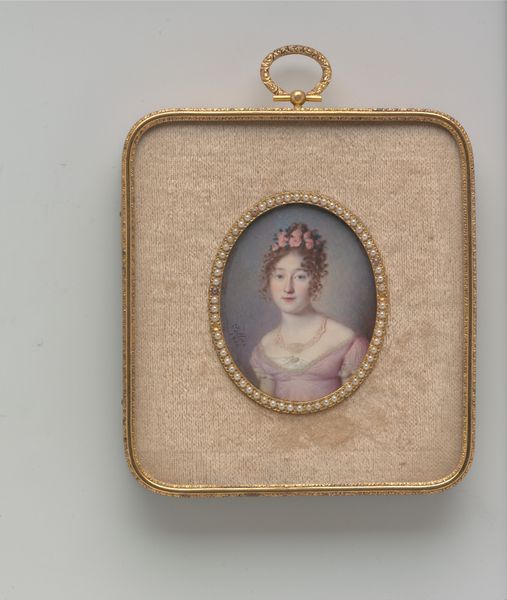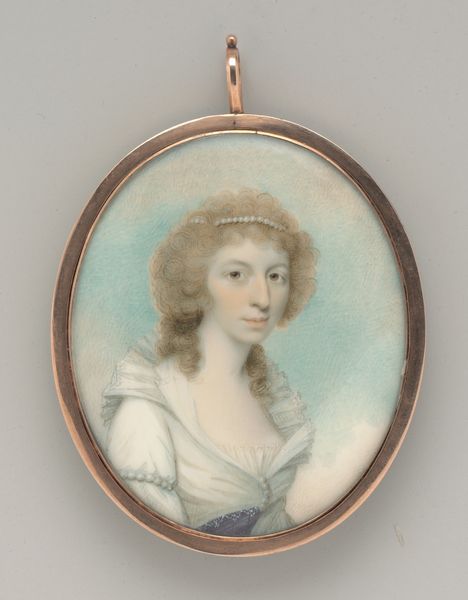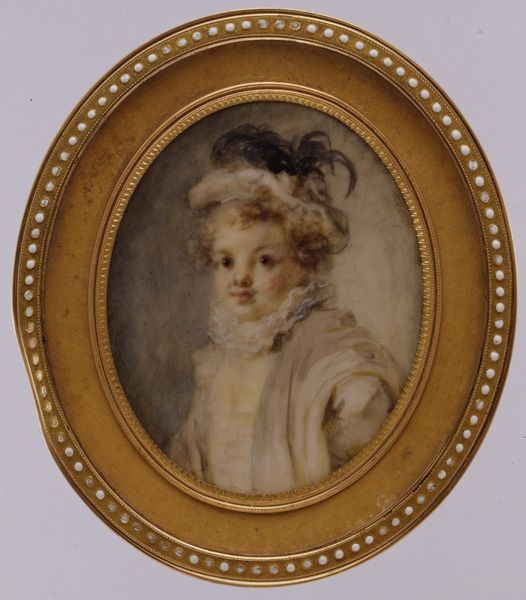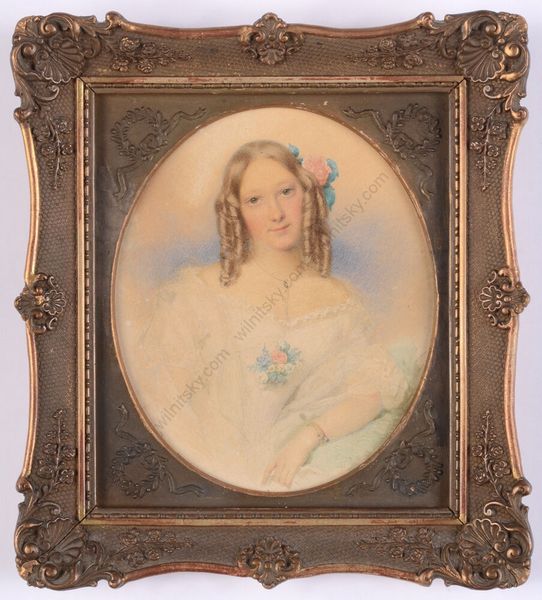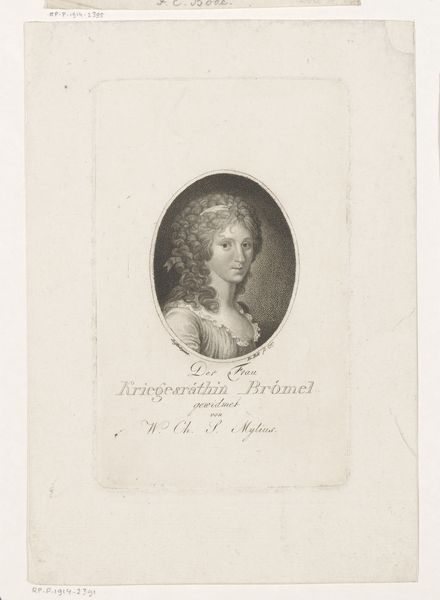
Mrs. Nathaniel Bowen (Margaret Blake) 1802 - 1805
0:00
0:00
painting, watercolor
#
portrait
#
painting
#
watercolor
#
intimism
#
romanticism
#
watercolour illustration
#
genre-painting
#
academic-art
#
miniature
#
watercolor
Dimensions: 2 17/32 x 2 1/16 in. (6.4 x 5.2 cm)
Copyright: Public Domain
Curator: This is a watercolor portrait miniature of Mrs. Nathaniel Bowen, born Margaret Blake. Painted circa 1802-1805 by Jean Francois de la Vallee. Editor: It possesses a delicate quality, doesn't it? The small scale imbues it with an aura of intimacy, a captured moment preserved within its circular frame. Curator: Precisely. Let’s examine the formal elements. The artist’s use of watercolor achieves a subtle luminosity, particularly in rendering Mrs. Bowen’s complexion. Note how the oval format directs the viewer's eye to the figure, contained within the frame. Editor: And contained in her social role, one might say. The details, from her attire to the way her hair is arranged, speak of a particular class and status within early 19th-century society. It evokes a powerful sense of domesticity, wouldn't you agree? There's a serenity, a sense of ordered life, but also a possible undercurrent of constraints dictated by societal expectation. The gaze seems to ask something, I'm unsure of what. Curator: The formal arrangement lends itself to that interpretation. Observe the positioning of her body; she's presented frontally, yet there's a slight turn of the head, breaking from complete symmetry. It provides a visual dynamism, inviting scrutiny of the facial expression. It certainly plays to a study of portraiture as practiced in Academic circles at this time. Editor: Speaking of the face, what interpretations could arise when observing that particular look in her eyes? I wonder about the power these objects, especially portrait miniatures, once possessed—functioning as keepsakes, surrogates for loved ones separated by distance or death. Curator: Indeed, they were imbued with enormous personal significance. Now, consider the broader art historical context. It reflects a prevailing trend toward Romanticism, evidenced not so much in the dramatic rendering as in the heightened emotional intimacy that portraitists explored during that period. There are few historical breadcrumbs to observe, sadly, which is too often the case for artwork that depicts women from that time period. Editor: A glimpse into a world, meticulously crafted and preserved. So, in closing, what can one glean from a simple observation of this work? Curator: It's a testament to the artist's technical skill and ability to encapsulate not only physical likeness, but also hints of individual identity within the constraints of social convention. Editor: I leave intrigued by how it reminds me that objects, particularly portrait miniatures, often carry emotional weight and resonate beyond the visual, speaking volumes about both the sitter and their era.
Comments
No comments
Be the first to comment and join the conversation on the ultimate creative platform.
